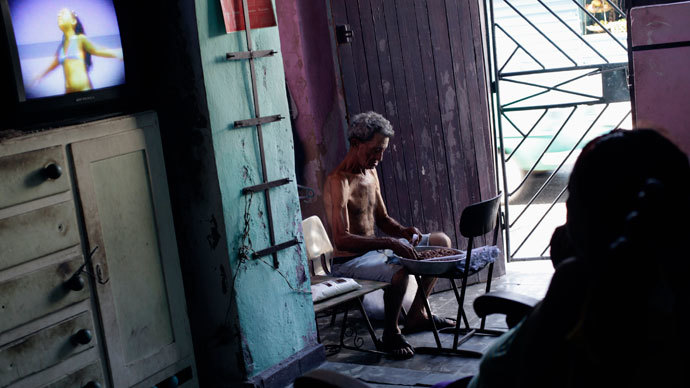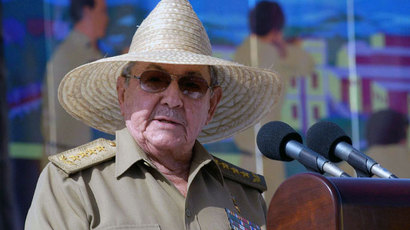US wasted $24 million on flawed mission to jam Cuban TV

The US government has spent more than $24 million to fly a plane over Cuba and forcibly broadcast American propaganda on television. The plot was neutralized by the Cubans, who have consistently blocked the transmissions with their own signal.
Dubbed AeroMarti, the initiative has attempted to give Cubans an
alternative to the government-controlled media for several years
running. It first debuted nearly two decades ago and has cost
taxpayers close to $25 million over the past six years alone.
But the broadcasts, everything from baseball to featured
interviews with enemies of former Cuban President Fidel Castro,
are disrupted by Havana and amount to little more than wasted
spending in Washington.
The US Broadcasting Board of Governors oversees AeroMarti and,
according to Foreign Policy magazine, has asked Congress to
discontinue the program two years in a row, admitting it has been
a failure.
“The signal is heavily jammed by the Cuban government,
significantly limiting this platform’s reach and impact on the
island,” reads the 2014 budget request, as quoted by Foreign
Policy.
The plan relies on a blimp on a cable floating above the Florida
Keys and a C-130 military plane, which was first introduced in
1956, to broadcast its signal.
“Proponents of the program say we can’t stop doing it because
it would send a bad message to the Cuban government,” said
John Nichols, a communications professor at Penn State University
in Pennsylvania. “That’s bogus: It’s ineffective, it wastes a
huge amount of money and the compromise we make to keep it on
air, knowing it violates international law, is not at all worth
it.”
AeroMarti has cost American taxpayers more than a billion dollars
since debuting in the mid-1980s under President Ronald Reagan.
US-sponsored broadcasts aired on Cuban radio in 1985 and later on
Cuban television in 1990.
“It’s hard to believe we are still wasting millions of
taxpayer dollars on beaming a jammed TV signal – that fewer than
one per cent of Cubans see – from an airplane to the island,”
Senator Jeff Flake, (Republican-Arizona) told Foreign Policy.
The plane is currently suspended because of government
sequestration – federally mandated spending cuts that put many
government duties on pause because of the ongoing fiscal crisis
– but its ultimate fate lies with the House of
Representatives and the Senate Appropriations Committees. No
indication of their intentions regarding the program have been
forthcoming, but several prominent lawmakers are on record as
supporting the initiative.
Senator Robert Menendez, a New Jersey Democrat who serves as
Chairman of the US Senate Committee on Foreign Relations, has
been one of the most vocal proponents.
“I will continue to stand behind the mission of Radio and TV
Marti until the Cuban government ceases to deprive its citizens
of objective and uncensored media sources,” he said. “The
Martis play a critical role in providing information to the Cuban
people about the events in and outside of Cuba connecting with
nearly a million Cubans every week. In this day and age, there
are numerous platforms, new media tools, and technologies
available to the Martis to fulfill and continue this integral
mission, and I believe we should use every possible medium to
break through the Castro regime’s censorship barriers.”
While the broadcasts have reached a relatively small number of
Cubans, it is likely those images have been some of the only
exposure they have had to Americans over the past half-century. A
US embargo cut off travel between the countries in 1959, when
Fidel Castro ascended to power.
US President Barack Obama eased travel restrictions when he
assumed office in 2009, pushing for the “free flow of
information to, from, and among the Cuban people “and
increased “people-to-people contact.”













